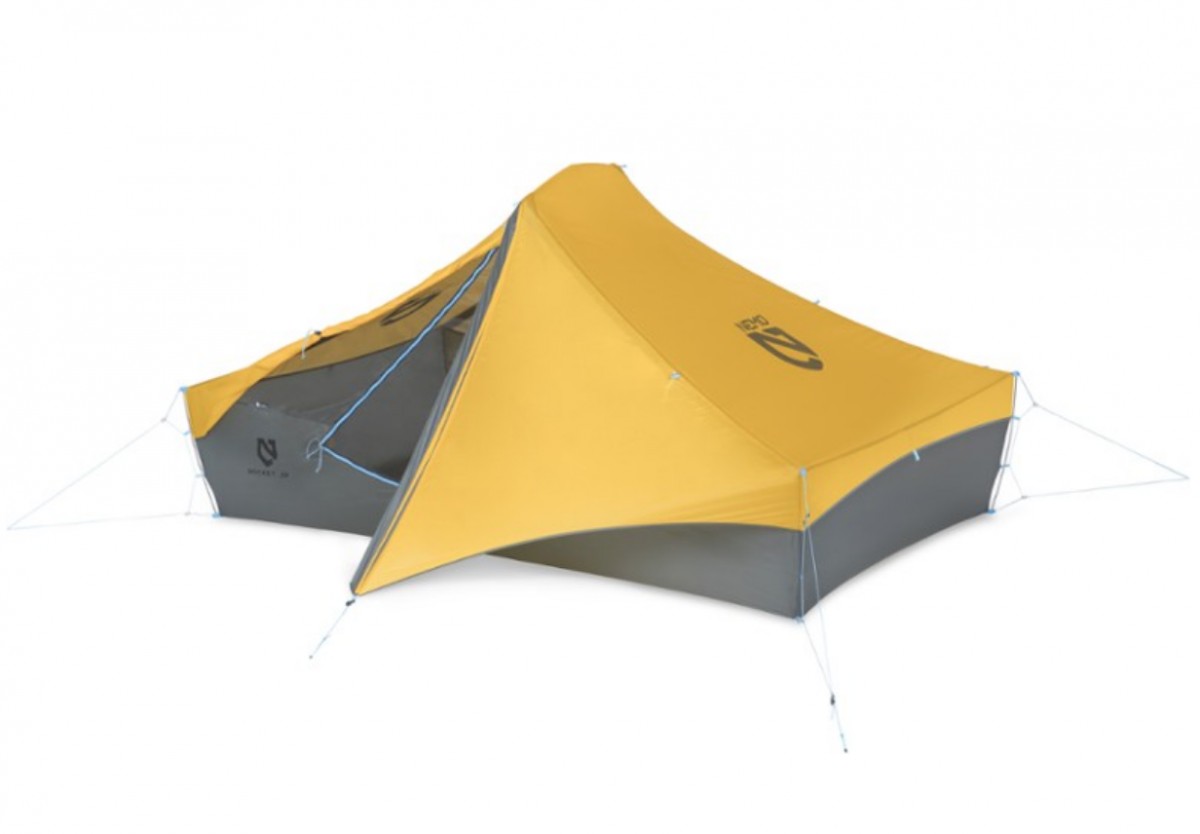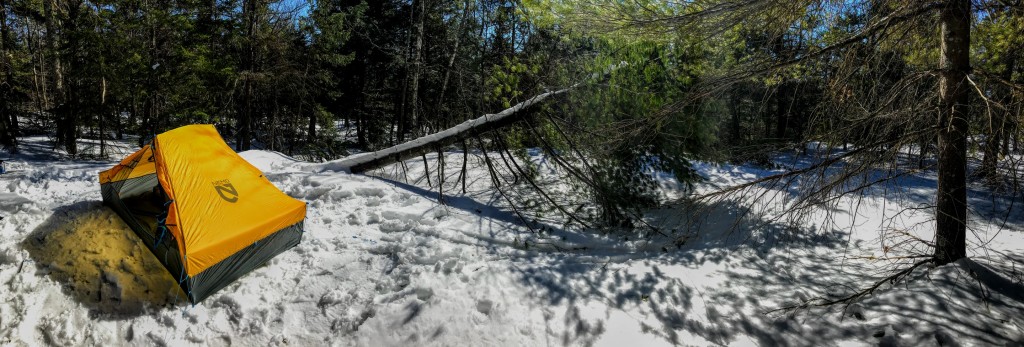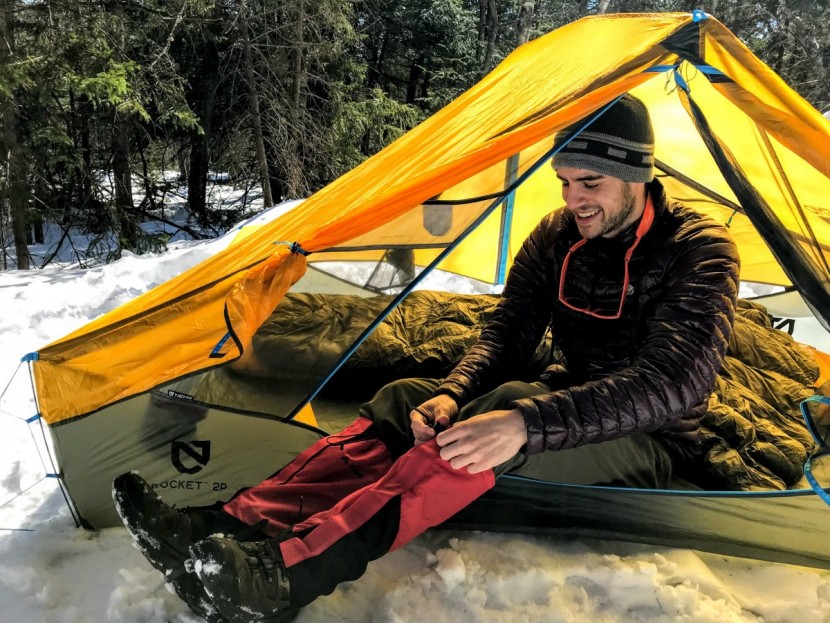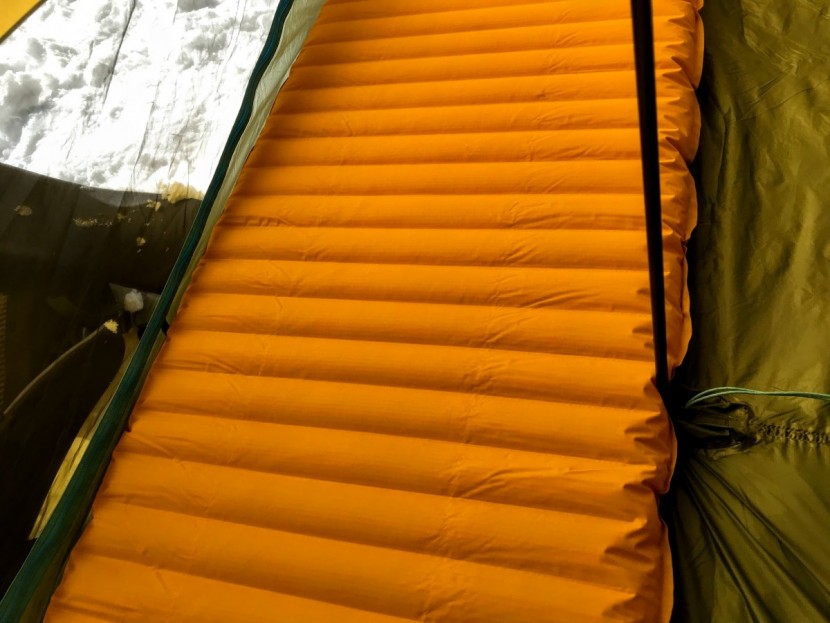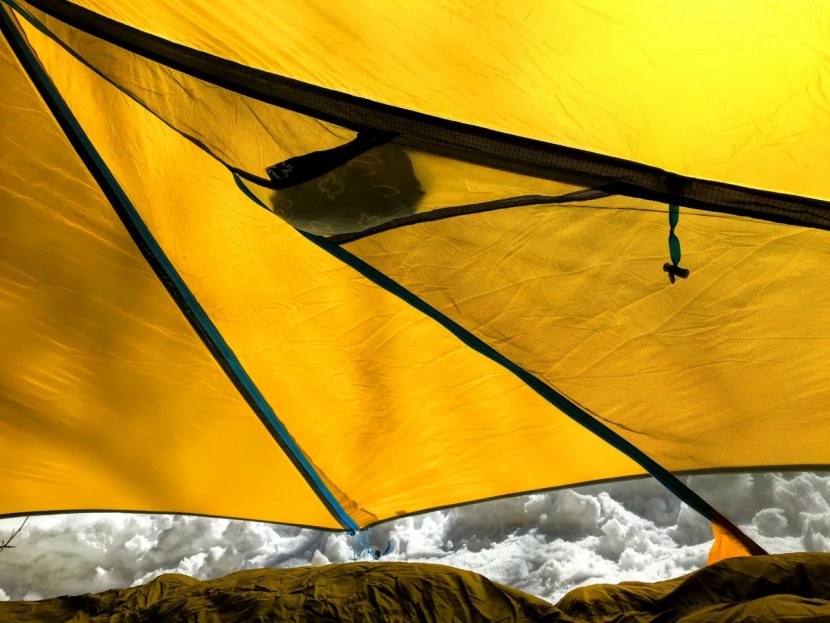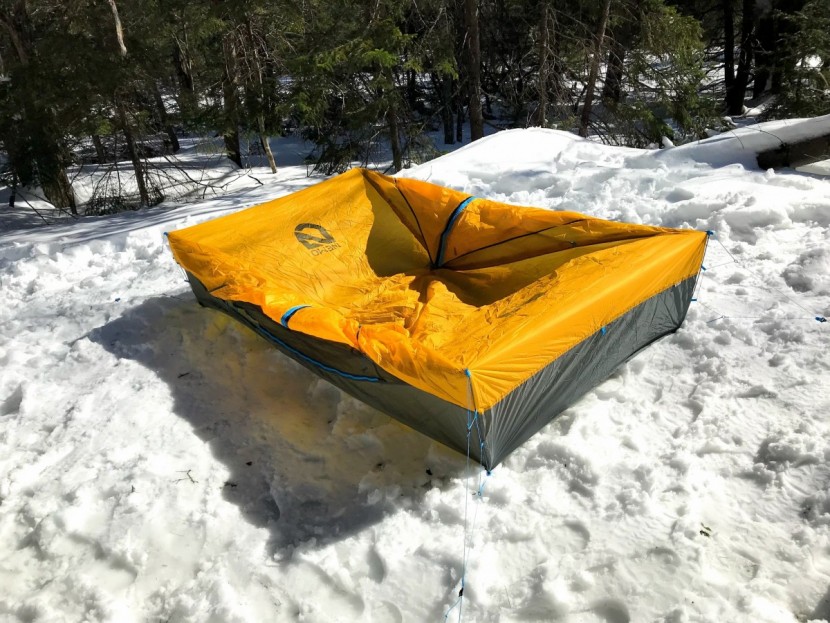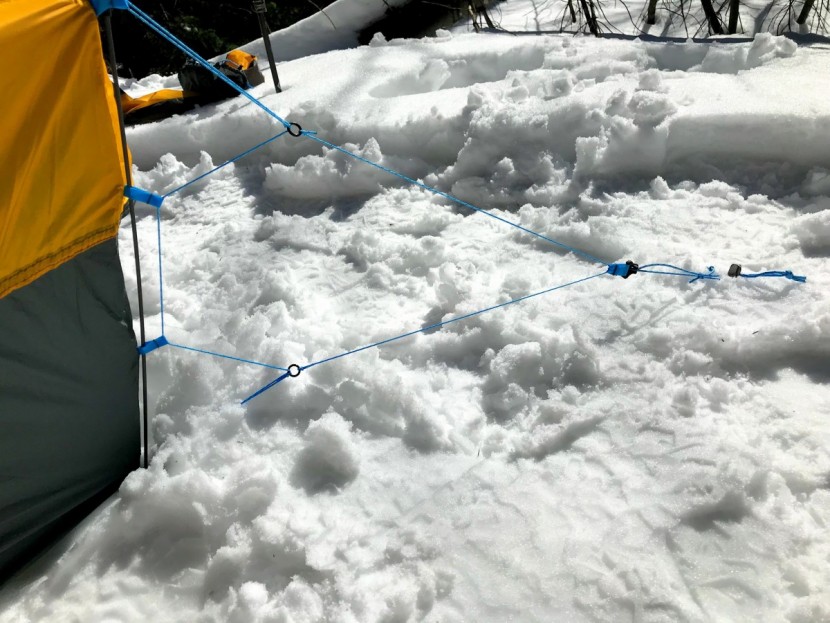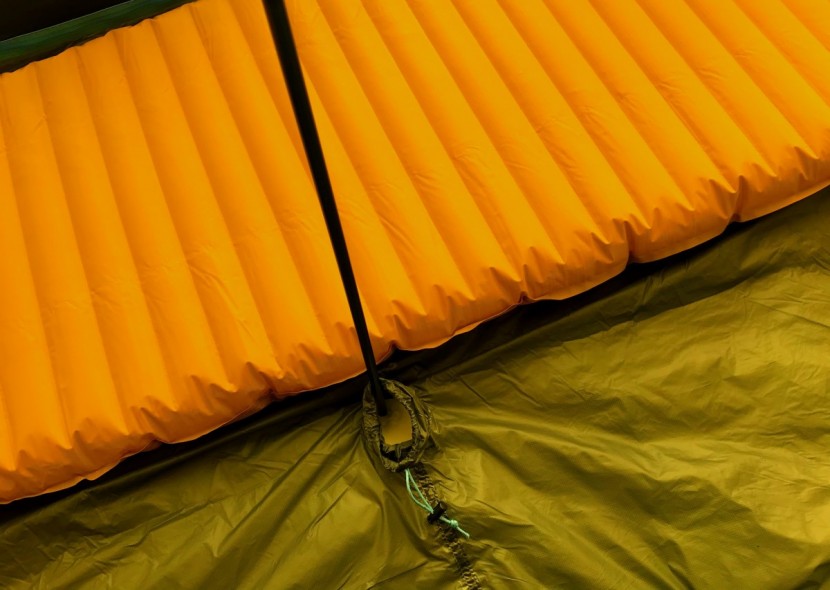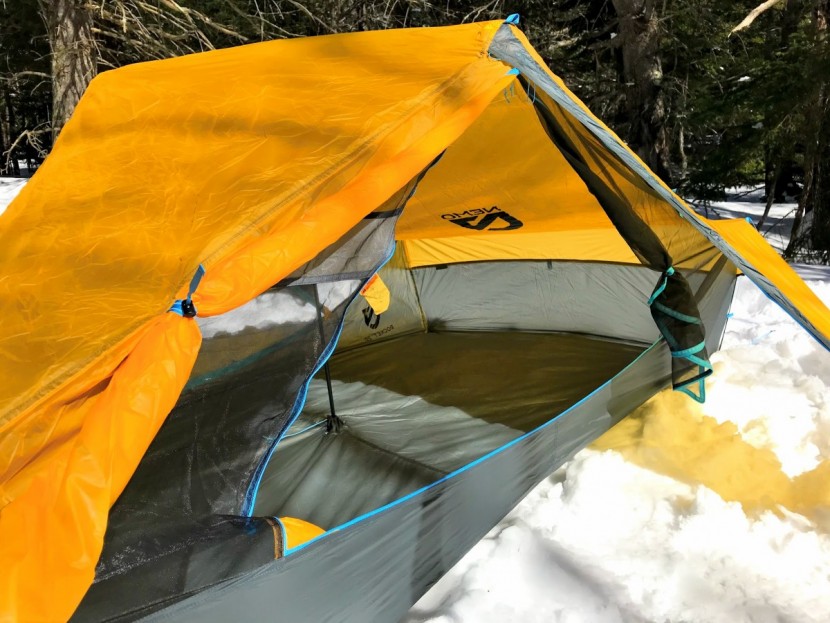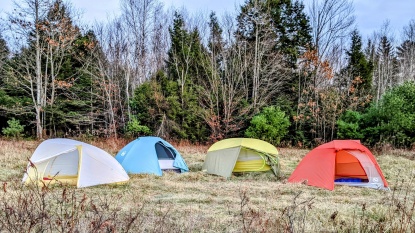NEMO Rocket Review
Our Verdict
Our Analysis and Test Results
This tent takes a pretty novel approach to design. However, many of its features could use some refinement. It's super lightweight for a tent. It accomplishes this by replacing much of the skeleton of dedicated poles with rods and guyline tension. During testing, we found that it took much longer to set up than a traditional freestanding model. And if the tension isn't right, you are going to pay for it when the wind and rain come. We think in its next iteration it can be a contender for the top, but ultimately, the Rocket is not going to win an award because it just doesn't execute on what it promises.
The NEMO Rocket finds itself right in the middle of the pack. It scores well for weight and packed size, but loses some ground for a lack of comfort features and tricky setup.
Comfort
The NEMO Rocket hits the mark in a few important ways but falls short where it counts the most. We love the two side doors — in our opinion, almost essential for a two-person tent. In terms of dimensions, this model makes the most of the least. Even though it is relatively short, the vertical carbon fiber struts at the corners provide enough volume down low that you don't feel too cramped head-to-toe. If you are on the taller side (six feet or over), in the process of sitting up, your head will bump up against the canopy unless you are actively avoiding it. Once you get semi-vertical though, there is actually enough headroom to sit up.
One major drawback to the configuration is the center pole. It's right where you want to be, and its position means that if it's a shelter for one, a single sleeper can't take advantage of diagonal space. The tent is also just wide enough to accommodate a standard Thermarest.
The Rocket is also really light on storage pockets. In fact, it is limited to the two light diffusing pockets at opposite corners.
Ease of Setup
In terms of setup, this tent is somewhere between a tent and a UL shelter. It largely relies on tension at the corners to maintain its volume with the set of included T-poles providing height across the center.
During testing, we struggled to get this tent pitched the right way. Once we thought we had the corners right, we'd step back and realize it was actually a little wonky. We ended up having to go around to each corner at least a couple of times to readjust before we were pleased with the result.
Because of the length of the cord at each corner, this tent also requires a wide berth beyond the footprint of the floor itself to pitch properly. There is some flexibility in terms of stake positioning, but it can definitely be difficult if you are in a densely forested area.
We also found that because of its reliance on tension for its volume, there is quite a bit of downward pressure that gets exerted on the bottom of the T-pole. If the tent is on soft earth or snow, this pole will pierce through the ground, reducing the head height and total volume and increasing the sag factor. We would love to see some sort of small foot attachment to the end of this pole to distribute the force more evenly.
Weather Resistance
Partially as a result of the setup, we found that the Rocket was susceptible to a little more sag than anyone would prefer, especially in bad weather. Because of its very boxy form, the wind can really catch it if it's not pitched in a protected spot. The fly also sits fairly high off of the ground, which always allows wind to swoop up debris moisture and debris from underneath.
On the other hand, if you camp in arid areas where precipitation is less of a factor, the open vestibules contribute to otherwise decent ventilation.
Durability
This tent is made for fast and light. Consequently, its materials are thin and delicate. We want to emphasize that during testing, we did not experience any failures. Having said that, we could envision wear and tear taking its toll on the 7D canopy and 10D floor rather quickly.
In addition, the struts that create much of the base structure are extremely thin. Yes, they are sturdy carbon fiber, but every material has its breaking point.
Weight and Packed Size
If there is one place that this tent really shines (and there is!), it's in the weight and packed size department. At the scantest 1 pound, 11 ounces,
At 21.5x5 in, it is a long and skinny addition. If you have managed to pack a ton of other gear, it is actually slender enough that it fits into some backpack water bottle pockets (secured at the top with some other cord), or clipped onto the bottom where some folks might strap a sleeping pad.
The only bummer here is that because of the very skinny carbon fiber struts, you have to be careful about how you pack it. It's not a tent for stuff, lest you puncture a bag of food or a hydration bladder.
Best Applications
The Rocket is best used for ultralight backpacking adventures, or camping anywhere with a lot of space to pitch. Because of its truly minimal weight, we can easily imagine this tent as a shelter for one. Its really slimmed down feature set makes it a good choice for anyone prioritizes lightweight over everything else.
Value
At $450, the Rocket is a high-end investment that may not ultimately pay off for many outdoor enthusiasts. Its ghostly weight and high-end materials understandably contribute to its price tag, but it's an expensive product that requires extra care to keep in good shape.
Conclusion
The NEMO Rocket is a novel product with some interesting features. It's truly ultralight, single-wall tent that requires some getting used. If you are a fan of traditional freestanding models, we suggest you look at the award-winning Big Agnes Tiger Wall UL2 or NEMO Hornet Elite. Ultimately, we hope that this tent can be refined into something a little more livable and user-friendly.


